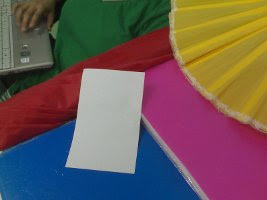A common source of degradation is the presence of noise in the image. Noise can hide useful information in an image. It is acquired mostly during image acquisition and transmission. Noise is composed of random values that follows a distribution which is expressed by a Probability Density Function of PDF. Figure 1 shows the respective PDFs of the different noise types to be used in this activity.
In this activity we implement basic image restoration of noisy images using different filters. We use a test pattern shown by Figure 3 along with its PDF and then add noise to the image which will be used as the image to be restored. In restoring the noisy images, four different types of filtering, shown by Figure 2. are investigated for each type of noise.

Figure 2. Types of filtering used.

Figure 3. Test image and its PDF.
It can be seen that each peak in the PDF of the original test image has spread into the shape of the distribution added noise of the such that the three gray levels are almost coinciding with each other. This is the degradation that is done when adding noise. The same goes for the other distributions. The PDFs of the restored images simply shows how the filters restore the image which is by filtering out the unwanted gray values by thus thinning the fattened distribution for each peak gray value.
Figure 4 shows the noisy image for the added Gaussian noise with mean = 0.5 and standard deviation = 0.8. The resulting restored images using the five filters were almost the same achieving the three distinct gray value peaks which is close enough to the original.

Figure 4. Image with gaussian noise and restored images.
Figure 5 shows the noisy image for the Rayleigh Distribution. From the PDFs of the restored images, it can be said that the restored images using the arithmetic and geometric mean filter were much better than the other filters.

Figure 5. Image with rayleigh noise and restored images.
For the image with Gamma Noise shown in Figure 6, all the filters produced almost the same restored images except for the +Q Contraharmonic filter where the spread of the gray values is still visible.

Figure 6. Image with gamma noise and restored images.
The test image added with Exponential Noise is shown in Figure 7 and the restored image using the +Q Contraharmonic is clearly not a good result which is obvious from the image itself. Looking at the PDF for this restored image shows that the peaks were just shifted and broadened thus resulting to the noisy image.

Figure 7. Image with exponential noise and restored images.
Uniform Noise added image shown in Figure 8 shows great degradation due to the shape of the distribution itself where the is no defined peak value. Here, the arithmetic mean filter seems to have produced the best results although the peak gray values are shifted resulting to a lighter gray value for the area that is supposed to be black.

Figure 8. Image with uniform noise and restored images.
For the Salt and Pepper Noise it can be seen that the arithmetic mean filter just blurs the salt and pepper noise thus smoothening it out. It can also be noted that the +Q contraharmonic filter filters out the pepper noise while the geometric, harmonic and -Q contraharmonic filters can filter out the salt noise.
The arithmetic mean filter basically blurs the image to smooth out the noise. The noise models and image restoration filters are also applied to a grayscale image which was used in a previous activity. The following series of images show the image with the different added noise types and the corresponding restored images using the five filters.







































































